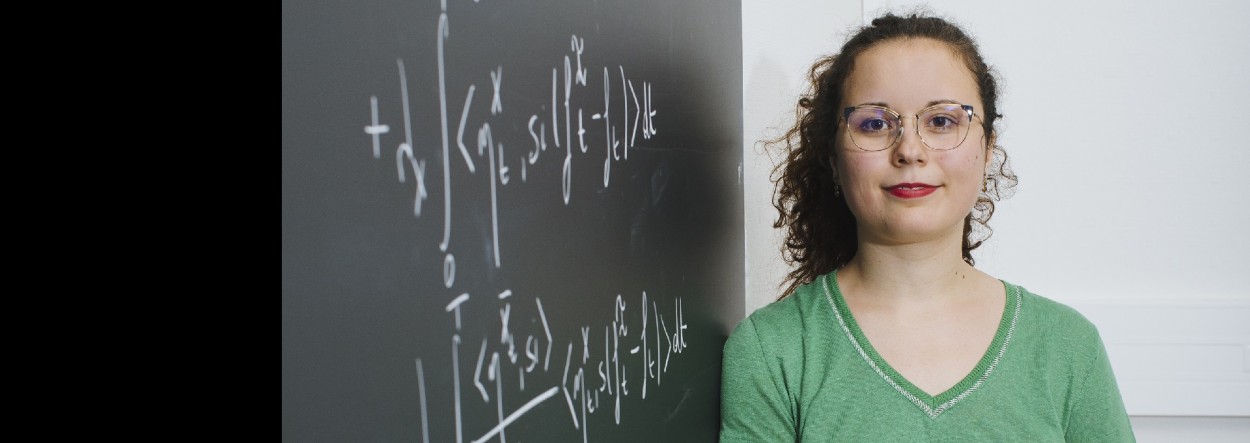Madeleine Kubasch awarded L'Oréal-Unesco Young Talents 2024 prize
 Crédit photo : Richard Pak
Crédit photo : Richard Pak
Between mathematics and life sciences, Madeleine Kubasch has found her right balance. After graduating from high school with a double degree in mathematics and biology, she naturally turned to mathematics, while maintaining the link between the two: “I like this interdisciplinary aspect”. This was reflected in the theme of her thesis at the Center for Applied Mathematics (CMAP*) and INRAE's Mathematics and Informatics Applied from the Genome to the Environment (MaIAGE) unit : the study of mathematical models for the propagation of epidemics.
“More precisely, the aim of my thesis was to better understand how the distribution of individuals within households and workplaces will influence the spread of an epidemic,” she explains. Indeed, depending on this distribution, it may mean that the same people are often encountered, resulting in a very different epidemic evolution than if the mixing is larger. The motivation was also to provide a way of better designing teleworking strategies, which have a direct effect on this distribution. This question has taken on new importance since the start of the Covid-19 epidemic but can be applied to influenza or other airborne diseases.
The mathematical models used to characterize how individuals can mix, and potentially contaminate each other, are not new, but they are highly complex. They require a lot of resources to run, and their analysis is not straightforward. In her thesis, Madeleine Kubasch showed which aspects of workplace distribution play an important role, and developed a “reduced” model that is easier to run.
The mathematician succeeded in proving that this reduced model was capable of correctly reproducing epidemic dynamics. The spread of an epidemic is a random phenomenon, but if the population concerned is large, or even infinite, then deterministic characteristics emerge, in the same way that if you toss a coin an infinite number of times, you're bound to get 50% heads and 50% tails, even though the result of each individual toss is the result of chance. Herein lies the principle of proof: in this limit where the population is very large, the reduced model gives the right dynamics, a sign that it is working properly.
"The research process is creative,” she emphasizes. "You have to have a certain intuition about the behavior of the mathematical object you're studying, whatever it may be, and find the right way to put that intuition into practice. Once you've found the right way, it's extremely satisfying". As well as the beauty of the reasoning, Madeleine Kubasch enjoys being able to explore many different biological questions with the same mathematical tools.
But if the links between mathematics and life sciences are fruitful, they are sometimes revealing of the gender inequalities that persist. “I was confronted with this in the sense that there was a very large majority of girls in the biology bachelor's degree, whereas in the maths master's, the ratio was completely reversed. There's no fundamental reason for it.”
As part of her own efforts, Madeleine Kubasch takes part in initiatives organized by the Femmes et Sciences and Femmes et Mathématiques associations to introduce high-school girls to professions related to mathematics and computer science, as well as mentoring them in their post-bac career choices.
Now a post-doctoral researcher, Madeleine Kubasch continues her work at the interface between mathematics and life sciences - in this case ecology - with the aim of studying how spatial management of the agricultural landscape affects biodiversity.
*CMAP: a joint research unit CNRS, Inria, École Polytechnique - Institut Polytechnique de Paris, 91120 Palaiseau, France
 Support l'X
Support l'X